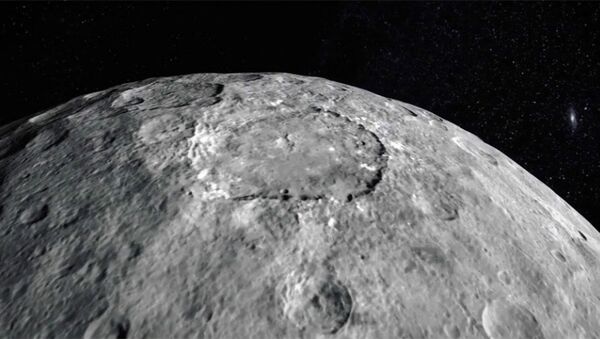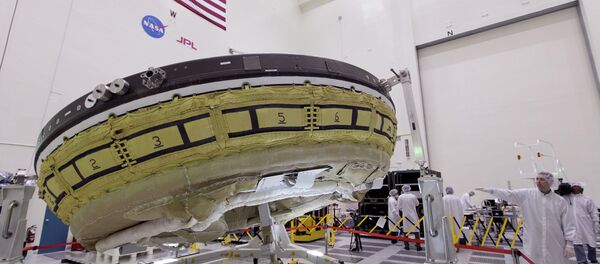"We used a three-dimensional terrain model that we had produced based on the images acquired so far," said Dawn team member Ralf Jaumann, from the German Aerospace Center in Berlin. "They will become increasingly detailed as the mission progresses — with each additional orbit bringing us closer to the surface."
Dawn entered the orbit of Vesta in July 2011, and spent a year exploring the asteroid, a rocky body which was discovered in 1807. Vesta is about the length of Arizona and appears to have a surface of frozen lava, thought to have flowed out of the asteroid's interior shortly after it formed around 4.5 billion years ago.
In March this year, the spacecraft arrived at the dwarf planet Ceres, which is the size of Texas. Like Earth, Ceres has a differentiated interior, with denser materials at its core and lighter minerals near its surface. Astronomers suspect that Ceres may have water ice buried beneath its crust, and even frost-covered polar caps. On the probe's approach in February it captured images of bright spots on the planet's surface, for which one explanation might be the presence of ice.
#Ceres looking great as always in this closeup, taken 3,200 miles (5,100 km) away http://t.co/M3s6CGBiZo pic.twitter.com/SqI2UD9Dje
— NASA's Dawn Mission (@NASA_Dawn) 8 июня 2015
Ceres was at first considered a planet when it was first discovered in 1801 in the orbital region between Mars and Jupiter, where astronomers had predicted a planet should lie, on the basis of Kepler's harmonic scheme.
After a number of small bodies were detected in the same region, the area became known as the asteroid belt and Ceres was downgraded to the status of asteroid. In 2006 the International Astronomical Union gave it the status of dwarf planet, when Pluto was downgraded to the same level. There are currently five recognized dwarf planets: Ceres, Pluto, Eris, Makemake and Huamea.





